In order to choose the right color, it is necessary to imagine how certain colors act on the human nervous system, what feelings and sensations cause. Correctly selected colors will help to establish a dream, which in the end will have a positive effect on well-being and performance.
Color and shade combinations
It is known that the selection of color combinations can fix room defects, for example, visually raise the ceiling, "push" the walls, create a feeling of spaciousness or vice versa, reduce the room, add warmth or coolness. In addition, some combinations can beneficially affect the nervous system, calm, harmonize, while others have an exciting effect. All this must be considered when choosing a color for the bedroom.
First of all, you need to decide whether to use the colors of warm or cold colors.
- The warm part includes the part of the spectrum from red to yellow with all intermediate shades - they are usually used in rooms facing the north and northeast.
- Colors of the opposite part of the spectrum, from blue to violet, are considered cold; they are used in rooms that overlook the south and south-west sides.
Complex colors such as green, purple can refer to both cold and warm, depending on the additional tones included in their composition. Blue-green and blue-violet are cold colors, but yellow-green and red-violet are warm. Black, white and gray are considered neutral, and do not carry a “warm” or a “cold” component.
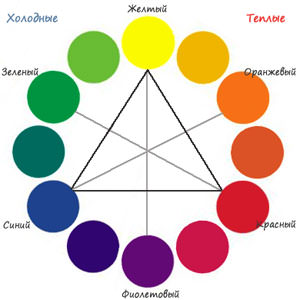
Warm colors have the ability to visually reduce the room, while cold colors, on the contrary, slightly expand it. Designers use this in the design of interiors, approximating or moving away certain details in order to create the maximum decorative effect.
For example, a suitable color for a small bedroom is blue and white. Against the background of blue walls, white furniture will look good, on which there may be contrasting inserts of blue color. Bed linens in this case can also be white - this will facilitate the interior and visually enlarge the room.
Color harmony
In design, there is such a thing as color harmony. A color in itself and the same color in the neighborhood with another color may look different. In some combinations, it will be expressive, while in others it will be faded. Harmonious is a combination of colors in which everyone looks most impressive. The harmony of colors can be built on the principle of nuance or contrast.
Nuance. Harmony based on the nuances of the same color is achieved by using similar colors or shades of the same color. Usually these are soft, pastel colors. If one color is used, then surfaces with different saturation are combined. For example, the surface of the walls is light beige, and the furniture is dark brown. Usually, nuance harmony is used in small rooms.
Contrast. You can choose the color for the bedroom, based on the principles of contrast harmony. Combine contrasting colors, the number of no more than three in one room, so as not to create an excessive load on vision and not to tire the nervous system. As a rule, two contrasting colors are used - as the primary and secondary, with the possible addition of a third as an accent.As a primary-secondary pair, you can use, for example, these:
- blue - orange
- blue yellow
- White black
In this case, you can take both these colors themselves and their shades.
Tip: When choosing color combinations, pantone fans with color shades available in every paint-selling store, as well as in designers' workshops, will help you. It is easy to determine from them exactly which shades will combine well with each other, and which should be avoided. For the same purposes, you can use computer programs designed for designers and artists.

Feng Shui
Each of the world cultures has its own traditions in the design of living space, aimed at creating maximum comfort and convenience. Using such traditions can help create an atmosphere that will be most conducive to well-being. The last decades, the Japanese teaching on the arrangement of interiors - Feng Shui, is gaining popularity. It takes into account all the nuances - and the location of objects on the cardinal points, and their color.
The color scheme for the bedroom in the teachings of Feng Shui has its own characteristics.
- The bedroom, facing East and Southeast, should be designed in a combination of green and brown colors.
- The bedroom, whose windows are oriented to the South- or North-West, is painted in brown and dark yellow tones.
- The southern windows in the bedroom oblige you to choose red or its shades as the main one.
- The bedroom with windows to the North is painted in shades of blue.
- If the windows look to the West or North-West - the bedroom is painted white.

Color effect
The choice of color for a bedroom is significantly affected by its effect on the human nervous system, so this issue needs to be considered in detail.
- Red
This is a very energetic color, it is associated with the lower, physical chakra, responsible for procreation. It is associated with sexual activity, and contributes to its manifestations. Therefore, you need to use red color in the bedroom very moderately, a large amount of it can cause irritation and tire.
The predominance of red in the room can increase pressure, increase respiratory rate and heart rate. Red in the bedroom is suitable for activating and preserving the spouses' passion, but it should not be much, it is better to use calm red shades.
- Orange
A more suitable color for the bedroom is orange. It is a warm color that promotes relaxation, especially if it is diluted with white. Orange is the color of the second chakra associated with pleasure. The most pleasant for the eyes and the nervous system is a peach shade.
- Yellow
The color of the third chakra, responsible for self-esteem and self-awareness in society. Warm, clear color, contributing to the harmonization of the nervous system. It has a slight stimulating effect.
- Green
The color of the heart chakra associated with tenderness, love, maternal warmth. This is the color most useful to the eyes, allowing them to reduce their fatigue. The nervous system calms down, blood pressure decreases, the heart rate decreases.
Green is considered one of the most favorable colors for rest and relaxation, while the best choice is natural, soft shades: olive, green-gray, swamp. Too much green can inhibit nervous activity, so it must be diluted with other tones.
- Blue and cyan
If you are in doubt whether you can choose the right color for the bedroom, choose blue or blue, the colors of the fifth and sixth chakras, which are responsible for spirituality. These shades are the best option - the bedroom creates a feeling of peace, serenity, spaciousness, coolness.
The color of the sky and water is natural, positively affects the mental state and is suitable for interiors of any style. Keep in mind that in the blue bedroom there should be good lighting, it is also desirable that it faces south. White furniture will help give the interior lightness and airiness.
- Purple
The seventh, upper chakra is responsible for the connection with the divine principle, and has a purple color. This is a complex color that requires caution in use. Especially delicate should be treated with dark violet, which can inhibit the work of the nervous system. At the same time, light, whitened tones will help to create an elevated, slightly mystical atmosphere in the bedroom, and a combination with white will help visually increase its volume.
- White
Traditionally, this is the color of purity, infinity, innocence. It has incorporated the entire palette of colors, and has a refreshing effect on the nervous system. White helps visually increase the room, create a feeling of lightness, airiness.
When choosing a color scheme for a bedroom, it is worth staying on white if the room is small. But you need to think about which color shade to use. White can be cold and warm. The first option is suitable for bedrooms with southern windows, the second - with northern ones.
- Brown and beige
Natural shades of brown, including beige and sand, create a calm atmosphere close to nature. Light beige tones are combined with any other, and can be a good background for both white and dark brown furniture. Brown shades cause a feeling of security, reliability, solidity. Too dark tones of brown can depress the psyche, so they must be complemented with light shades.
Beige is a great choice of color for the bedroom, it will give comfort and peace. Complemented with a tan or taupe, beige will look very elegant. It can also be combined with other colors of your choice. The color of wenge wood can be attributed to the same group of colors - this is a very dark brown shade of African wood, sometimes almost black. Often the furniture in the bedroom is made of wenge wood, which looks very advantageous against a beige background.
- Gray
Contrary to popular belief, gray is also a suitable color for a bedroom. It is absolutely neutral, which allows you to combine it with any other colors and shades.
The addition of white or black tones changes the saturation of gray, so that even a monochrome bedroom will not seem boring, and, besides this, it gives ample opportunity for visual correction of room defects - those parts of the walls or ceiling that need to be removed are painted in light gray , and those that need to be brought closer to dark.
By adding color accessories, you can very quickly and without great expense change the mood of the gray bedroom, and even its temperature: warm tones will make you feel warm, cold tones will make you cool.
Recommendations for creating a color scheme for a bedroom
Choosing the colors that you will use, you need to imagine the interior as a whole, and how this particular color fits into it.
- Furniture, decoration materials, textiles, decorative elements - the colors of all objects in the room should be harmoniously combined.
- The neutral tones of furniture and accessories will simplify the creation of a harmonious interior.
- It is recommended to choose a color for the bedroom from a natural palette of colors - green, beige, brown, orange. This will help create a relaxed atmosphere.
- In small rooms, use light colors as the main ones, in large rooms - more saturated, dark. To "raise" low ceilings, use a pattern of vertically directed stripes on the wallpaper.
- The color of the walls depends not only on the chosen tone, but also on the texture of the surface on which it is applied. Sometimes it’s enough to change the texture to get the desired shade.
If you are having difficulty choosing a color scheme for the bedroom, contact a specialist designer to help you create a comfortable and elegant interior.

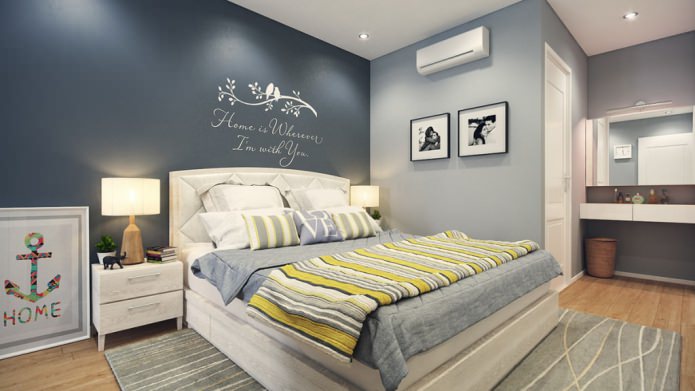
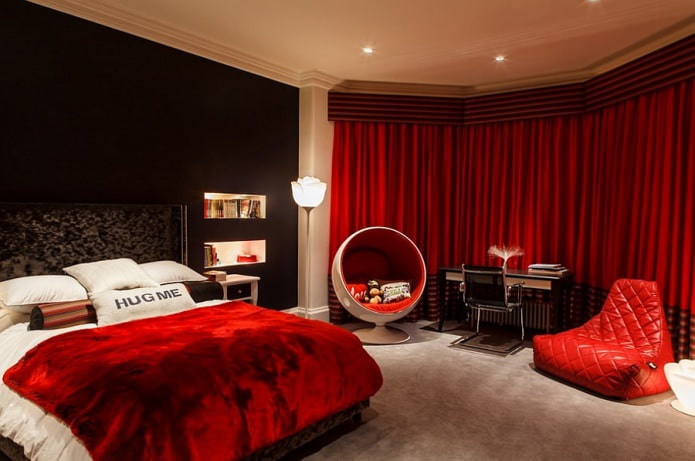
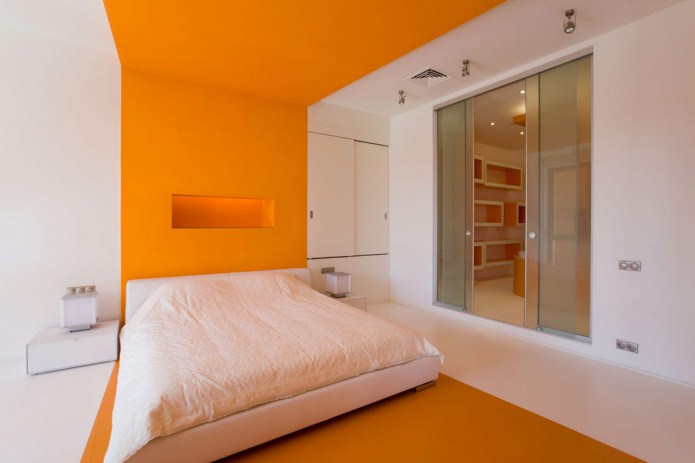

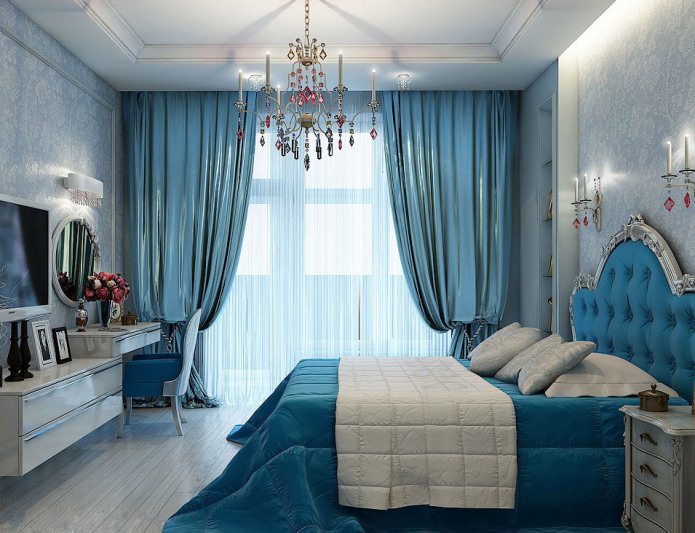
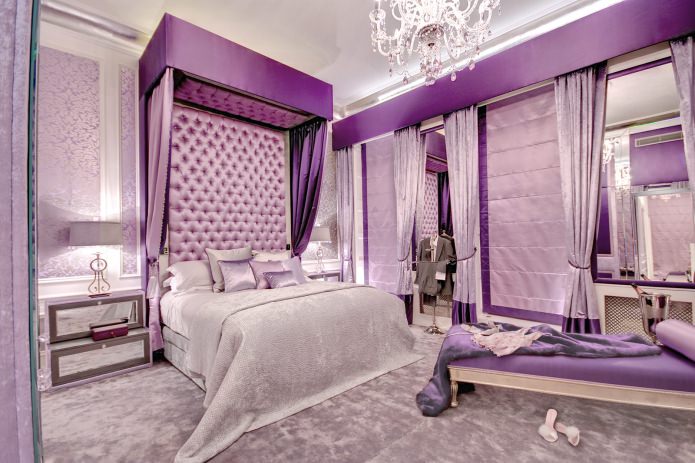
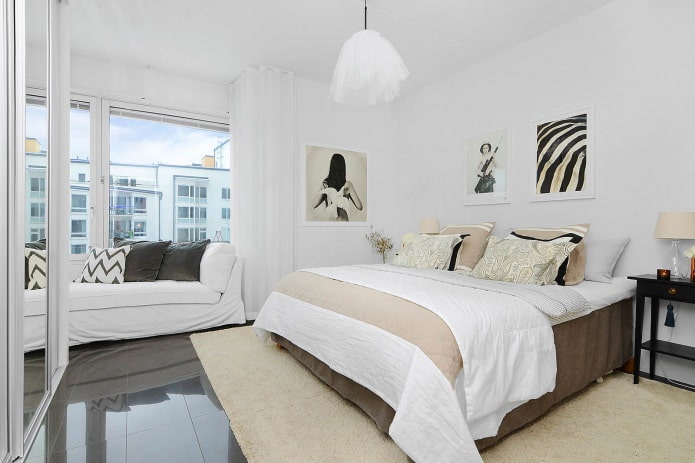
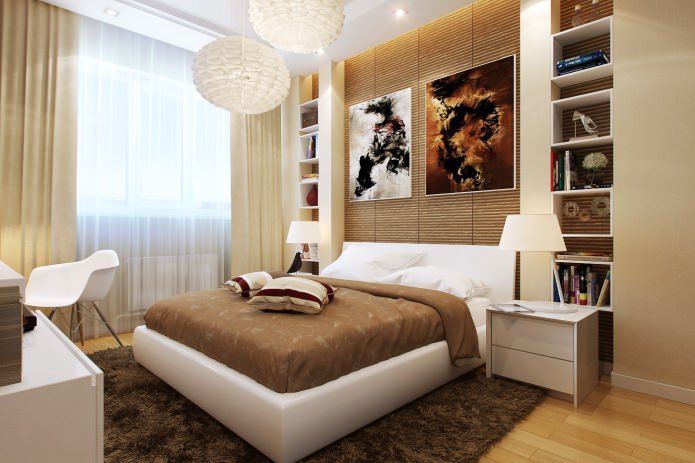
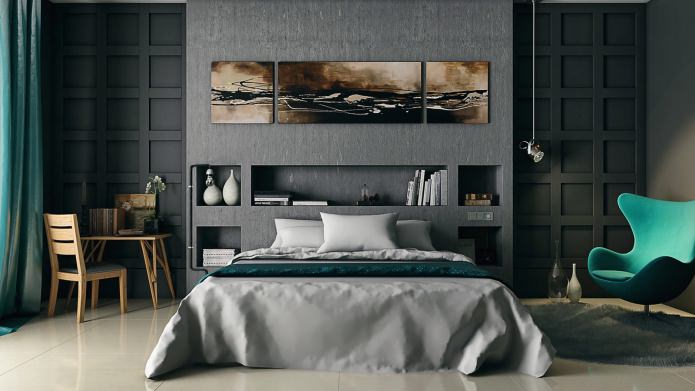

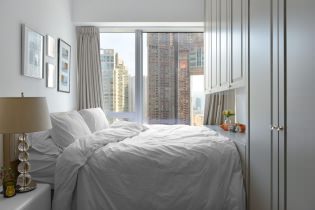 Choosing the best bedroom interior design in a small room (65 photos)
Choosing the best bedroom interior design in a small room (65 photos)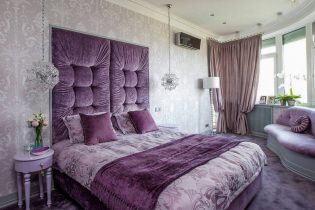 Wall design in the bedroom: color choice, decoration options, 130 photos in the interior
Wall design in the bedroom: color choice, decoration options, 130 photos in the interior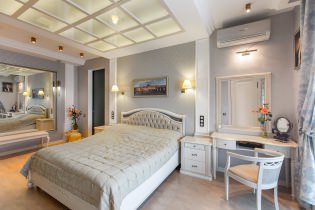 Design of a bedroom with gray wallpaper: 70 best photos in the interior
Design of a bedroom with gray wallpaper: 70 best photos in the interior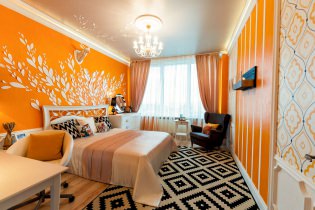 Bedroom design in orange tones: design features, combinations, photos
Bedroom design in orange tones: design features, combinations, photos Stretch ceilings in the bedroom: 60 modern options, photos in the interior
Stretch ceilings in the bedroom: 60 modern options, photos in the interior The choice of orthopedic mattress: features, types of fillers, sizes
The choice of orthopedic mattress: features, types of fillers, sizes